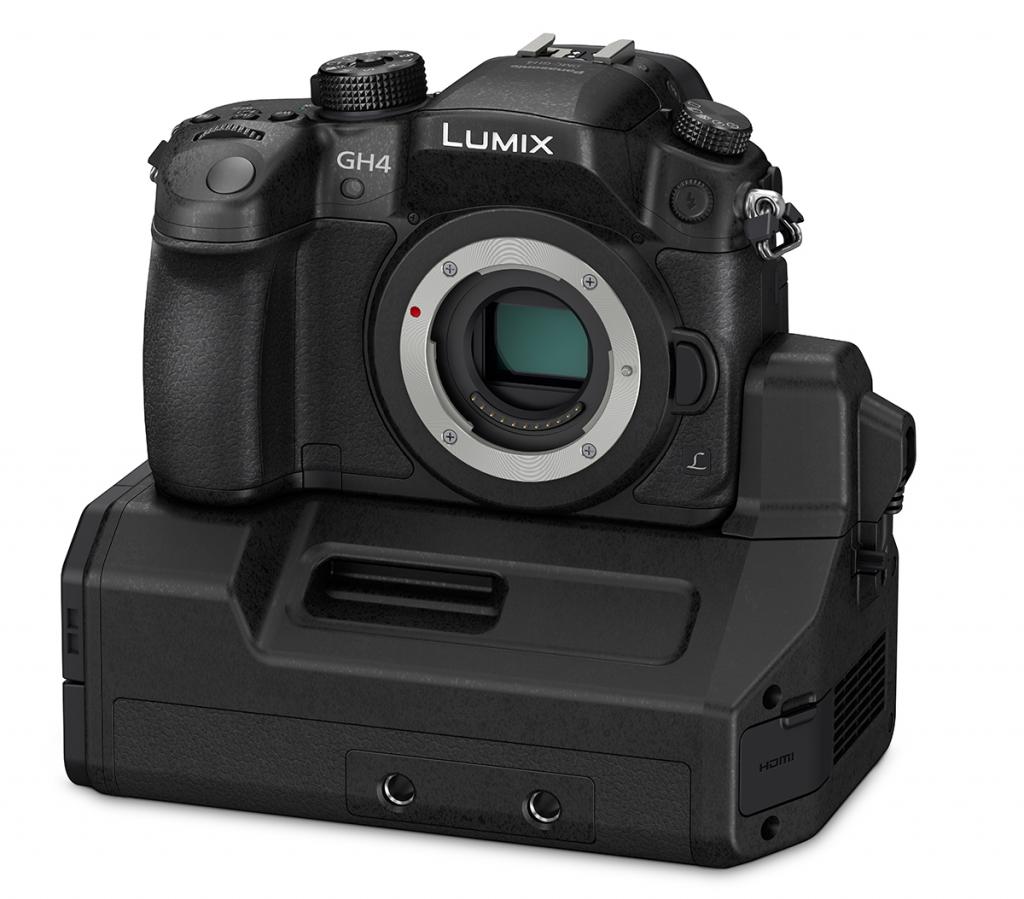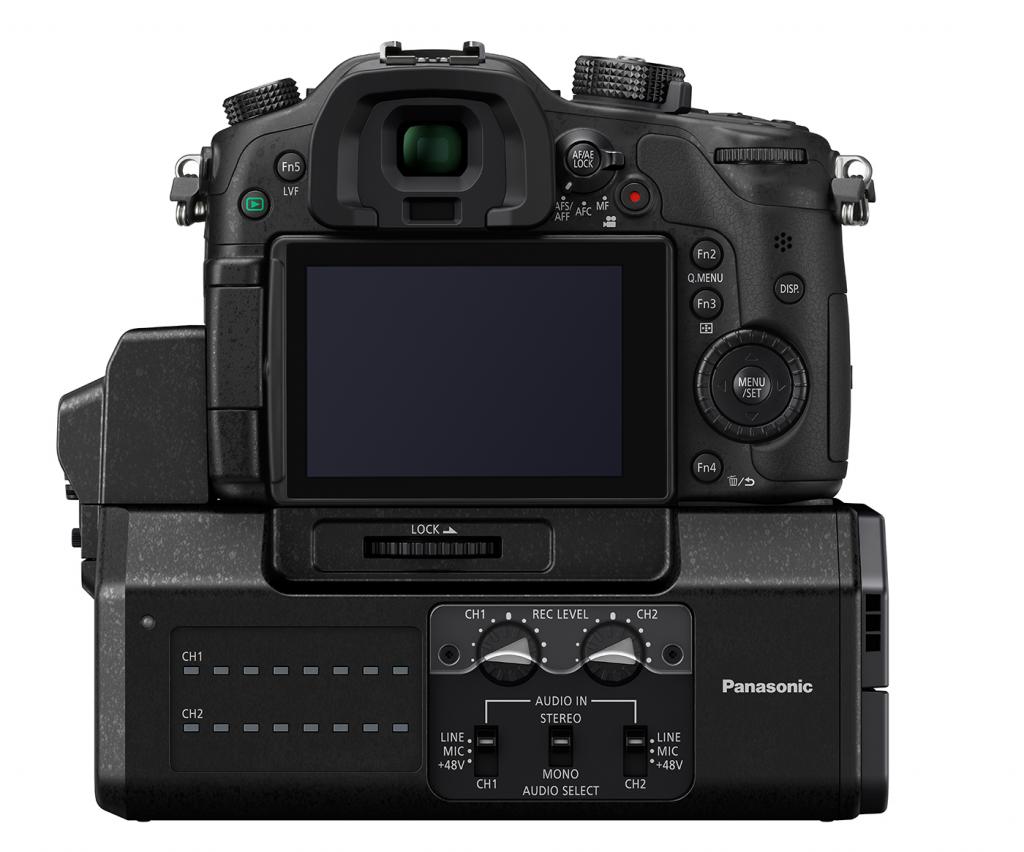photo:panasonicgh4
Table of Contents
Panasonic GH4 4K video stills camera
see also:
The GH-4 with optional YAGHE HD video accessory:
introduction
- announced Feb 2014
- world’s first Digital Single Lens Mirrorless (DSLM) camera recording HD video in 4K
- dSLR styled mirrorless in Micro Four Thirds system mount with awesome 4K/1080p HD video capabilities which should be a game changer for serious videographers
- adds new type of AF assist instead of phase detect AF which Panasonic term Depth from Defocus (DFD) technology which even shortens the time to set focus to achieve ultra high speed AF of approx.0.07 sec
- determines the distance to the subject by evaluating 2 images with different depth of field while consulting the data of optical characteristics of the using lens in a moment.
- tests shooting motorbikes show that the GH4 is currently the BEST mirrorless camera systems camera for fast and accurate AF, better than current dSLRs apart from pro sports dSLRs such as the Nikon D4s sports dSLR
- furthermore, following the lead from Olympus, it adds Eye detection AF - one of my favourite functions
- the very capable Panasonic GH-3 will still be sold but at reduced price - currently RRP $US1199
GH4 beats the Sony a6000, the Olympus E-M1 and the Fuji X-T1 for C-AF:
specs
- pro-level build quality - magnesium alloy full diecast front/rear frame with splash / dustproof construction
- new much improved 16mp sensor:
- allows the 4K HD video
- improved sensitivity (max. ISO 25600) and response (240fps refresh, extra 1/3EV of dynamic range at base ISO)
- stills horizontal resolution - 4608 pixels
- 50ms sensor readout (instead of 100msec on the GH3) suppresses rolling shutter effect even when using electronic shutter or recording motion image
- improved heat dissipation to allow 4K video and up to 60min BULB
- low pass filter to suppress moire
- improved image processor Venus Engine:
- dramatically boosting its performance with new quad-core CPU that lets high speed signal processing required for rich video recording such as 4K
- integrating superior noise reduction systems, DMC-GH4 enables shooting at max.ISO25600.
- sensitivity, gradation performance, resolution and color reproduction are dramatically improved
- newly adopted aperture filter is capable of controlling over wider frequency range
- adjusts the amount of sharpness according to the frequency level, resulting in faithful stereoscopic effect.
- improved AF:
- 49 AF points (GH3 had 23)
- Depth from Defocus (DFD) technology in addition to CDAF and predictive AF to improve AF on moving subjects
- Eye detection AF as well as Face detection AF
- Custom Multi AF mode in which users can freely select the blocks to focus out of the 49 focusing are
- 1-area AF area can now be seamlessly magnified not only in manual but also in auto focus mode.
- AF tracking to 7fps
- focus point can be set on any part of the 100% field of view
- stability of continuous focusing is improved focusing is now even smoother by minimizing wobbling in both photo and video recording
- using the Touch Pad AF, the position can be set either on absolute/relative coordinate
- Eye Sensor AF starts focusing by just looking into the viewfinder
- manual focus support:
- automatic or manual live magnified view
- focus peaking function that shows the peak of focus in MF and AF+MF mode
- can be set to HIGH / LOW / OFF and the color can also be changed to blue, white or orange according to the color of the shooting scene during live view.
- accessible via smartphone remote control
- newly developed EVF:
- high-precision, high-speed dual OLED displays for 2,359K-dot 16:9 100% field of view with eyepoint of approximately 21 mm
- 10,000:1 high contrast for superior color reproduction
- image can be displayed in monochrome through EVF which enables shooting concentrating on contrast
- large eyecup improves visibility
- eye sensor:
- image output between the EVF and the rear monitor is switched automatically with the eye sensor on the EVF, which features options of sensitivity – high, low and off – to reduce false operation during touching on the rear monitor
- 3“ 3:2 1,036K-dot rear OLED touch screen:
- rotates 180° to the side and tilts 270° up and down offers approx. 100% of field of view
- static touch control
- shutter unit that allows max. 1/8000 fast shutter release is also redesigned to be even more durable for approx. 200,000 times releases
- flash sync 1/250th sec for either built-in/external flash
- burst rate and AFC in still mode improved:
- 12fps in AFS mode (AF on 1st image only) max. 40 RAW images or 100 jpegs
- 7fps in AFC mode to AF track fast moving subjects
- improved controls:
- PASM mode dial locks just like the locking mode dial of the Olympus E-M1 and includes 3 custom modes
- Wi-Fi with NFC technology for remote control and tethering via smartphones
- in-camera RAW development
- silent mode:
- switches shutter from mechanical to electronic and turns all sound (AF, operation) off while suppress emission of AF assist lamp and flash with just a single setting for special shooting occasions
- great for Behind The Scenes shots during movie recording, and for weddings, classical music performances, etc
- HD video features:
- general features:
- Quicktime MOV, MP4 or AVCHD
- reduced rolling shutter
- capable of real-time image output on the external monitor via an optional HDMI micro cable simultaneously while recording video
- SMPTE time code / EBU / ARIB Color bars & 1KHz Test Tone
- LPCM sound recording (or option of AAC in QFHD 4K MP4 mode)
- full manual audio control
- 3.5mm stereo mic input
- Center Marker
- Synchro scan to suppress flicker
- Cinelike Gamma
- Master Pedestal - used to lighten or darken shadow areas of the image based on black levels
- Zebra pattern - to watch white wash-out
- Focus peaking
- PAL / NTSC switchable
- time-lapse or stop motion animation in electronic shutter mode
- articulated screen
- when recording the video in MOV, AVCHD Progressive, AVCHD or MP4(LPCM), the GH4 automatically generates multiple seamless files for continuous recording
- unlimited video length except 29 minutes 59 seconds on the European GH4 due to tax reasons
- can choose which broadcast safe RGB luma range to use (0-255, 16-235 for the safe range, or 16-255)
- new SD cards which can sustain up to 30Mb/s as a bare minimum - apparently good enough for 240Mbit/s 1080p
- optional external XLR / HD-SDI add-on (DMW-YAGHE) allows for:
- uncompressed debayered 10bit 4K output over 3G HD-SDI which can be saved on an external recorder
- sound inputs via XLR mics with audio level controls for each channel
- 12V power
- two screw threads on the front to add rails and support for PL mount lenses.
- 4K video:
- H.264 at 100Mbit/s IPB internal codec (much more efficient than the 500Mbit/s MJPEG on the Canon 1D C)
- 64Gb card can store 90min 4K video compared to 20min on Canon 1D C
- internal signal processing is said to be 4:2:2 while internal codecs are 8bit 4:2:0
- 4K Photo mode (firmware v2)
- allows capturing individual 8.8MP photos which can be triggered whilst recording 4K video
- Cinema 4K: 4096×2160 (academy aspect ratio of 1.85:1, 2.25x crop factor) / 24 fps
- when used with Metabones Speedbooster adapter you get Super-35-style 1.7x crop
- effectively gives you a continuous shooting rate of up to 30fps at 4096 x 2160
- QFHD 4K: 3840×2160 (16:9 ratio, 2.4x crop factor) / 24,25, 30 fps
- 1080p video:
- 23.98/24/25/29.97/50/59.94p at IPB 50/100 Mbps or All-Intra 200Mbps
- uncompressed 8bit or 10bit 4:2:2 1080p output via micro-HDMI - if you take the SD card out of the camera
- variable frame rates: 2fps - 96fps for 4x slow motion at full 1080p
- 132.9 x 93.4 x 83.9mm (5.23 x 3.68 x 3.30 in.)
- 560g with SD card and battery
- RRP $US1698 body only!
issues
- no sensor-based image stabiliser as with Olympus OM-D E-M1 so probably will need to be used with IS rig
- QFHD 4K misses some width of sensor so does not give the full wide angle field of view with a catalogue of Micro Four Thirds lenses
- no 4:3 mode for anamorphic lenses
- no internal ND filter solution
- DFD AF benefits are currently only for Panasonic lenses - lens firmware upgrades may address this for Olympus lenses but don't hold your breath!
- there is no 4K slow-mo mode
- to edit 4K video you need a powerful computer or laptop such as:
- Intel 2.4ghz i7 (quad-core) with 16Gb RAM
- suitable drives are internal SSDs, latest generation 7200RPM hard drives, external RAID storage devices via Thunderbolt (i.e. G-Tech)
- you need the YAGH to access uncompressed 10bit 4:2:2 4K output stream, the mini-HDMI port on the camera only allows either:
- 8bit / 10bit switchable 1080p in 10bit 4:2:2 format, uncompressed
- 4K 8bit 4:2:0 footage from SD card in playback mode
more info
photo/panasonicgh4.txt · Last modified: 2017/01/05 07:02 by gary1



